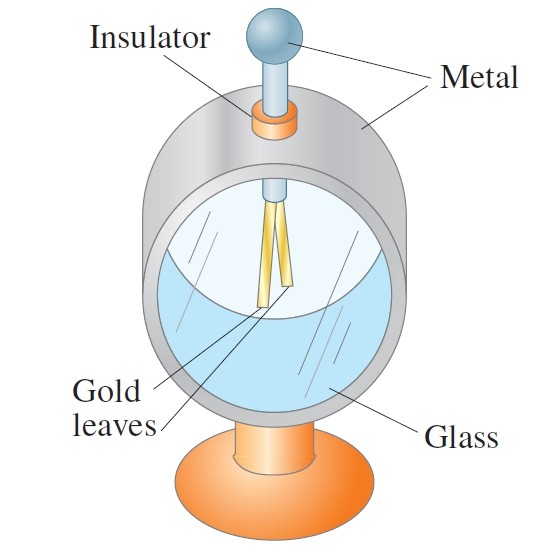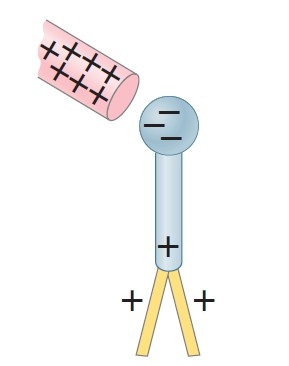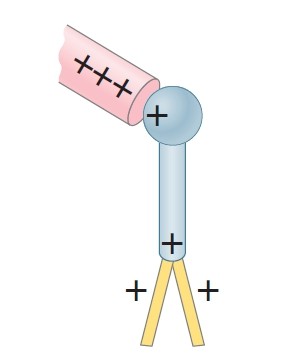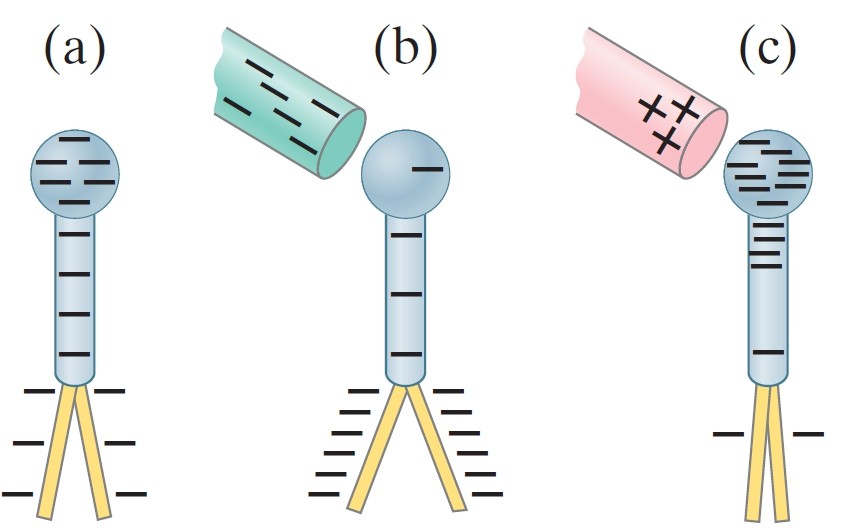Electroscope – detect charge and its sign
Last updated on May 28th, 2022 at 09:02 pm
In this post, we will first see what an electroscope is and then we will discuss:
– how an electroscope can help to detect the presence of a charge in a test body?
– and how an electroscope can find the sign or polarity of that charge?
What is an electroscope?
An electroscope is a device that can be used for detecting charge. As shown in Fig. 1, two movable metal leaves are kept inside a case. These metal leaves are often made of gold foil. Again, these are connected to a metal knob on the outside of the case through a metal rod. (Sometimes only one leaf is movable.)

How to detect charge with the help of an electroscope?
Detecting charge in an external object with the help of an electroscope is possible in 2 ways: (i) By Induction (ii) By Conduction or touching.
Detect presence of charge with electroscope by Induction method
If a positively charged object is brought close to the knob, a separation of charge is induced. Electrons are attracted up into the knob, and the resulting positive charges in the knob will be repelled and come down to the leaves and the leaves become positively charged (Fig. 2). The two leaves repel each other as shown because they are both positively charged. (as long as the external charged object is kept close to the knob)

Similarly, a separation of charge can be induced if a negatively charged object is brought close to the knob, where electrons in the knob get repelled and come down to the leaves making the leaves negatively charged. Here, also the two leaves repel each other as long as the external charged object is kept close to the knob.
So following this induction method we can find out whether an external object is charged or not, i.e., detection of charge in an object is possible. If the external object is charged irrespective of its polarity or sign, by induction method the leaves of the electroscope will repel each other and there will be movements. The greater the amount of charge, the greater the separation of the leaves. If the electroscope leaves don’t move at all that means the external object is not charged.
Note that you cannot tell the sign of the charge in this way, since negative charge will cause the leaves to separate just as much as an equal amount of positive charge; in either case, the two leaves repel each other.
Detect presence of charge with electroscope by Conduction method
If the knob of the electroscope is charged by conduction (touching), the whole apparatus acquires a net charge as shown in Fig. 3.
If the external test object is positively charged the conduction method will make the electroscope positively charged. Similarly, If the test object is negatively charged the conduction method will make the electroscope negatively charged.
In either case, the greater the amount of charge, the greater the separation of the leaves. But if the test object is not charged then there will be no separation of leaves.
Thus by following the conduction method we can take the help of an electroscope to detect the presence of charge in a test object.

Note that you cannot tell the sign of the charge in this way, since negative charge will cause the leaves to separate just as much as an equal amount of positive charge; in either case, the two leaves repel each other.
How to detect the polarity of charge with the help of an electroscope?
An electroscope can, however, be used to determine the sign of the charge if it is first charged by conduction: say, negatively, as in Fig. 4 (a).
Now if a negative object is brought close, as in fig 4(b), more electrons are induced to move down into the leaves and they separate further.
If a positive charge is brought close instead, the electrons are induced to flow upward, so the leaves are less negative and their separation is reduced, Fig. 4(c).

